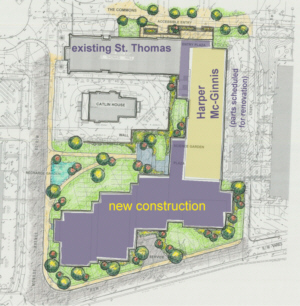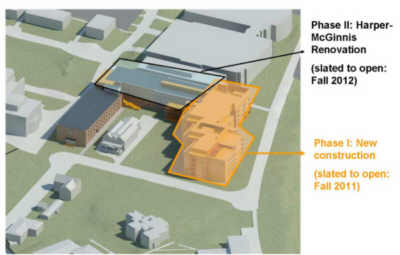Why The St. Thomas Parking Lot?

The selection of the St. Thomas parking lot for the site of the new LSC is part of a strategic plan developed for the entire campus. While there are a number of "empty" spaces on campus that could have accommodated the new building, erecting the building on the St. Thomas parking lot had a number of important advantages.
Project cost was certainly a factor. First and foremost, it was important that the new science center would be large enough to house ALL the science and mathematics departments in the College of Arts and Sciences. Constructing an entirely new space that would be large enough to house all the departments would have entailed a substantially larger capital expense. Through the architects' clever and meticulous design, we found that building a new construction that would seamlessly integrate with the Harper-McGinnis wing of St. Thomas Hall would allow us to "repurpose" and renovate Harper-McGinnis would bring the project cost down to an affordable amount.

Second, the construction of a science center at this location would allow the new Science Center to have a connection with the humanities, currently housed in St. Thomas Hall - a building that is considered to be the "academic heart" of arts and sciences. One of the key elements of this design is creating a physical space that would encourage collaboration between the sciences and the humanities. This is a critical element and a central theme of a liberal arts education.
Third, the new science center (coupled with the eventual removal of Loyola Hall) would for the edge of a new green space on campus that would engage the Estate, Alumni Memorial Hall and the Green, Campion Hall, Scranton Hall, the Rose Garden, and the Caitlin House. Green spaces transform our campus and create a welcoming outdoor space for use by all members of our campus and community.
To compensate for the loss of parking spaces, the University has implemented a new parking plan. Although the new parking plan would certainly present a change in our current parking habits, it is a small price to pay for the overall transformation of our campus. As an educational institution, the University maintains a strong commitment to creating a campus that promotes student learning, campus community, and educational transformation.





